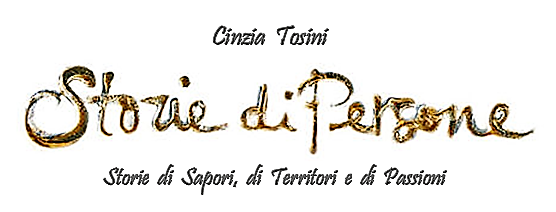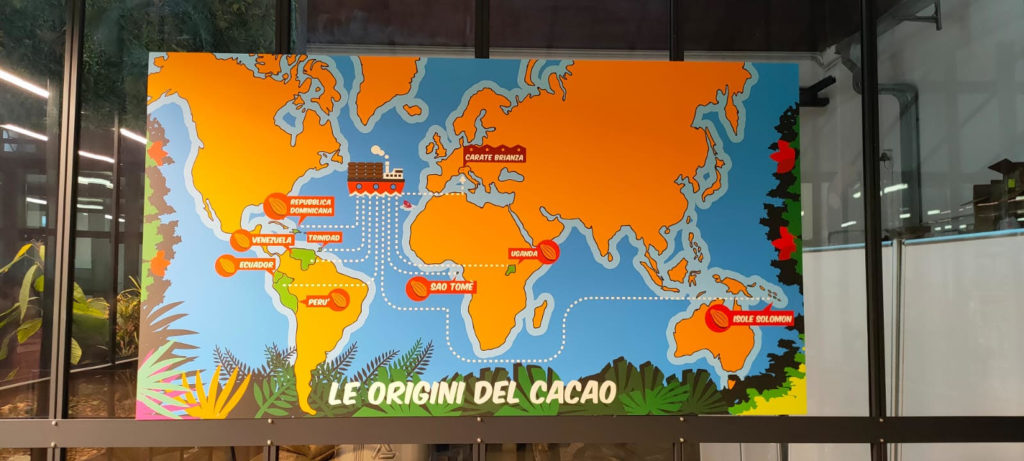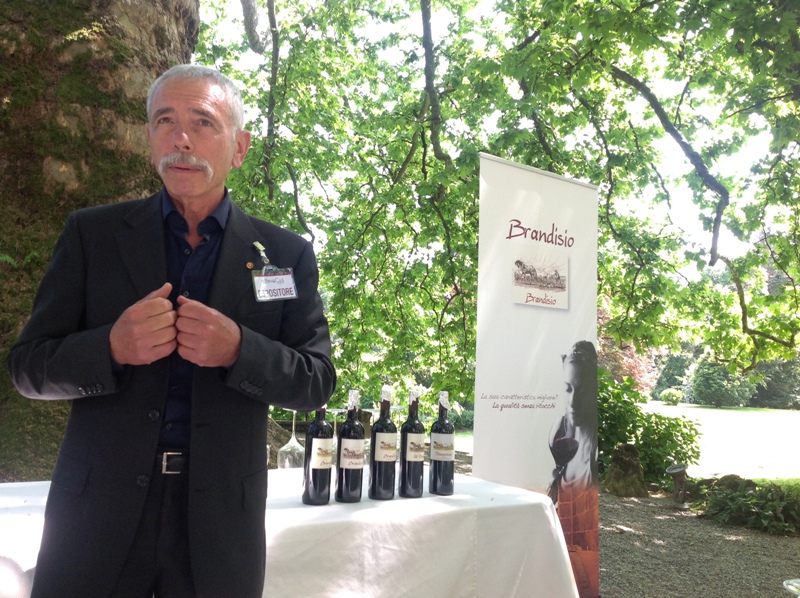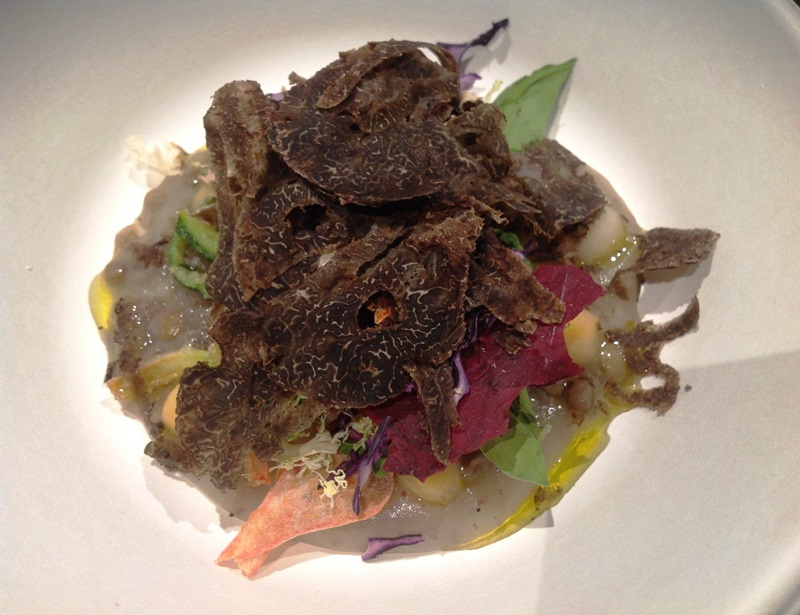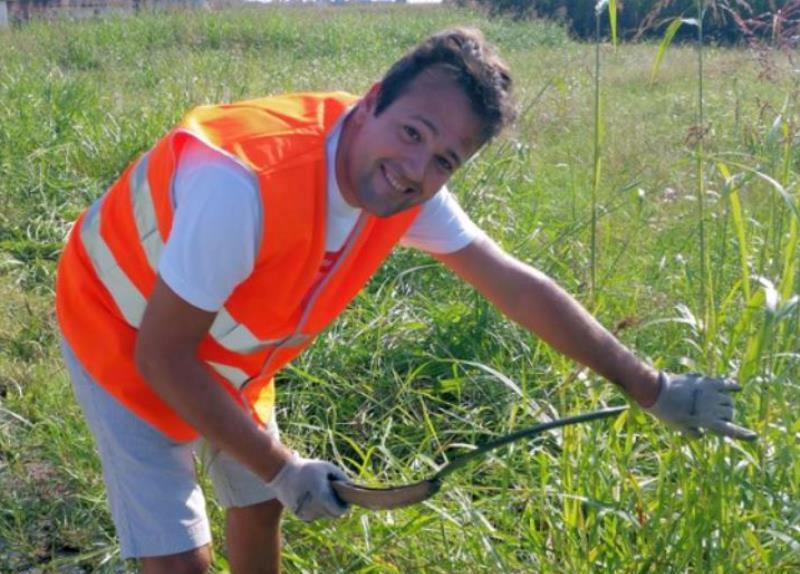My desire to get to know the artisan realities of the area where I live and my love for fruit, it led me to meet Marco Colzani, a craftsman with whom I shared critical issues and many ideas to think about. A Brianza winemaker-chocolatier who loves fruit. Yes, because we always talk about fruit, whether we refer to grapes for the production of wine, than cocoa beans for chocolate. His, a project dreamed up and implemented in an area with the characteristic industrial architecture of the past, than following a recovery plan, has become the 'District of Taste'. I am referring to the former Formenti, in the center of Carate Brianza.
Marco Colzani grew up in the family pastry shop in Cassago Brianza. Became an agronomist, released from the walls of family reality, wanted to evolve autonomously in the wine sector. After some experiences on Lake Como, continued in various Italian wineries, and not only ... In Franciacorta with the Moretti group, later alongside Roberto Cipresso, internationally renowned winemaker, until arriving in Sicily, working alongside Arianna Occhipinti, university mate, with which he made the first harvest in his winery in Vittoria. He also did not miss some experience in New Zealand and Canada, with some out-of-season harvesting to follow the production of ice wine, the 'ice wines'. An experience that he had to interrupt for a certain period for family needs, which brought him back to devote himself totally to the activity connected to the pastry shop together with his brother. Over time, the productions closest to his creative vein, they oriented him towards two processes: fruit juices, that, if it weren't for the fermentation they are not far from the must, and the chocolate. I'll stop for a moment on this, to reflect on a statement by Marco.
"Cynthia, in reality chocolate is more understandable by an oenologist than by a pastry chef, since one of the essential steps performed on cocoa beans is fermentation. Also, issues such as acidity and oxygenation must be managed during processing. In short, making chocolate is a winemaker's business, and the oenological knowledge that I have acquired has helped me to reinterpret the production of chocolate in a modern way.”
An affirmation also shared by a chef-pastry chef friend with whom, about that, I confronted. Effectively, the mastery of a pastry chef is from the chocolate onwards, obviously starting from the assumption that he chooses a good raw material. Unfortunately,, in the postwar period, with the arrival of industrial semi-finished products, the small productions of chocolate have been abandoned for economic reasons, e conseguentemente, also the production of systems suitable for artisanal processes (until 100 kg per day). A tutt’oggi, the cost of cocoa beans is even, if not higher, to an already made medium quality industrial chocolate. A consideration that should make us reflect on the choice of purchase.
Marco's collaborators
Following the activity of Marco's collaborators in the laboratory, it arose spontaneously for me to ask him what kind of professional training is required for those who have the job of making chocolate. The answer is surprising, but above all listening to the life stories of some of his helpers. Eccone alcune. Camille, a young French woman from Lyon, after a degree course in economics and commerce and an experience in France in the production of chocolate, she moved to Italy for love. After a visit to Marco's company and a working comparison, began his collaboration that has lasted for two years now. Paola, professional pastry training in Casatenovo, divided between the activity in a sweet laboratory and the help at a kindergarten. Marco found it perfect for his training projects with children. Rachel, literature training. The meeting with Marco took place after his return from Peru, following a year of work at a farm specialized in the transformation of cocoa beans.
People with different backgrounds who, approaching chocolate, have made it a reason for living. Wonderful passion that makes work a pleasure!
The importance of the origin of cocoa beans
In our discussions relating to the origin of the cocoa beans, we also talked about Claudio Corallo. An Italian to be proud of, arrive in Sao Tome and Principe, in the Gulf of Guinea, after having refined the techniques for the transformation of cocoa, starting from a good raw material, trains farmers and works in perfect harmony with the environment. The result is the production of a chocolate that many define among the best in the world. But that's another story ...
Well, returning to the importance of the origin of the cocoa beans, Marco buys exclusively from cooperatives or farms, making sure that the protection of workers is guaranteed, and that at the same time there are no situations of child exploitation, plague not yet completely overcome. In the last few years, with the restoration of the short supply chain, cocoa traceability is total, and consequently more guaranteed. More, the ease of direct contacts with farmers, given that the intermediation of cocoa traders is no longer essential, facilitate collaborations. In fact, cocoa is listed on the stock exchange, and its price is set internationally.
About PDO and PGI, indications of provenance established by theUE
When I asked Marco for some indication of the origin of the fruit he transforms, A discussion has begun on another issue that is very dear to me. I am referring to the 'perplexities' of many, let's call them that, on the well-known contradictions of acronyms that confuse the consumer rather than clarifying. You know the acronyms that we find written on fruit and not only… I am referring to the PGIs, the Protected Geographical Identification which places a constraint on the territory in which the transformation takes place, ma non sulle materie prime. In practice, it guarantees the place of production and the recipe, while the raw material can also come from other locations. Unlike, the product with the DOP mark, Protected Designation of Origin, must be made in Italy with Italian raw material. Understand the difference… already, a thorny issue for the protection of Italian productions, which often puts consumers in difficulty in choosing purchases.
The importance of collaborating with local artisans
I was very pleased to hear about the many active collaborations with local artisans. For example, just to name a few, Marco is a partner of the 'cider house project' for the production of cider(refermented with apple juice) con il Menaresta Brewery, another interesting production reality that I recently told you about. A collaboration wanted for his belief that the world of beer is much more precise and attentive than the world of wine, both from the point of view of oxidation and bacterial contamination.
The collaboration aimed at training with neighboring high schools is also active and profitable. In particular with 'In-Presa’, vocational training center whose motto – the need to learn arises from doing – says a lot. One of the many projects carried out and mentioned several times in my writings, always located in the 'District of Taste' of Carate Brianza.
“With fruit I make harvests every day!”
I assure you that listening to Marco describing his passion for fruit processing was truly captivating. Many of his statements that struck me and made me think. For example when, referring to his experiences as an oenologist, he began by telling me: “out, unlike before, I harvest fruit every day!” explaining to me that the real stimuli in the cellar, during his activity as an oenologist, he found them only in some short periods of the year. Actually, according to him, for many, processing fruit to obtain juices and jams could seem much less fascinating than transforming grapes into wine, but for him, it's much more challenging and fun. What can I say… perhaps only that to each his own, as long as it's healthy and well done!
Its current laboratories are two, one for the production of chocolate and one for the transformation of fruit into juices and jams. Transformations that, for the chocolate, are told through a training course called 'Spazio Cacao', open to anyone who wants to learn more about the origin and processing of cocoa, starting from the broad bean. An experience that I assure you stimulates the mind and senses!
Marco Colzani's laboratory www.marcocolzani.it
Piazza Risorgimento, 1 (entrance from via Firenze) Carate Brianza (MB)
